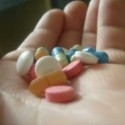3 Reasons Not to Mix Opiates and Alcohol
Opiate drug effects offer a two-edged sword in terms of their effectiveness as pain treatments versus their high addiction potential. Whether taking Vicodin as a treatment or using heroin for recreational purposes, certain precautions must be taken to avoid the harmful effects of these drugs. This is especially the case when it comes to mixing opiates and alcohol.
Opiates and alcohol may seem to “blend” nicely, but they actually bring out the worst in each other as far as their abuse and addiction potentials go. For these reasons, anyone who uses opiates and alcohol may want to consider how the combined effects of these drugs can cause serious physical and psychological problems over time.
Similarities between Opiates and Alcohol
According to the Centers for Disease Control & Prevention, opiates and alcohol both act as central nervous system depressants, slowing down neurotransmitter chemical activities in the brain and affecting most every major bodily system.
Opiates work by interfering with the chemical processes that regulate pain, while alcohol acts on the processes that regulate electrical activity in the brain. When combined, opiates and alcohol can easily overpower the brain’s ability to sustain normal bodily functions.
Call our helpline at 888-646-0635Who Answers? to see if your insurance will help pay your rehab costs.
Dangers of Mixing Opiates and Alcohol
1. Abuse Potential

Combining opiates and alcohol can impede normal brain functioning.
Both opiates and alcohol carry a high abuse potential in terms of how quickly the brain and body develop a physical dependence on these substances.
With regular use, the brain’s chemical system quickly adapts to their effects by decreasing the amount of neurotransmitters it produces on its own. In turn, a person must consume larger amounts in order to feel the desired effects.
This abuse potential essentially creates a vicious cycle in which a person consumes increasingly larger amounts of these substances over time.
2. Addiction Potential
Addiction potential has to do with a drug’s ability to interfere with the brain’s reward system processes, a system that ultimately determines what’s most important in a person’s day-to-day life. This system relies on an ongoing balance of neurotransmitters to function normally.
Opiates and alcohol both interfere with reward system functioning through the effects they have on neurotransmitter activities. Consequently, combining opiates and alcohol on a frequent basis increases the rate of addiction for both substances.
3. Overdose Risks
Perhaps the most dangerous risk that comes with combining opiates and alcohol has to do with the high potential for overdose that results when ingesting two powerful central nervous system depressants, according to the New York State Office of Alcoholism & Substance Abuse Services.
Considering the high abuse and addiction potential these two substances carry, the likelihood of overdose greatly increases the longer a person continues to combine opiates and alcohol.
Considerations
By far, opiates and alcohol exist as two of the most addictive substances on the market. While it may be easy to excuse a drink here and there when taking opiates as a treatment, the residual effects of combining the two can have unforeseen consequences down the road. Likewise, recreational opiate use only increases the risks associated with combining opiates and alcohol.
If you suspect you or someone you know may be experiencing some of the harmful effects that come with combining opiates and alcohol and need help finding treatment that meets your needs, please don’t hesitate to call our toll-free helpline at 888-646-0635Who Answers? to speak with one of our addictions specialists.
The Dangers of Combining Cocaine and Alcohol during the Holidays










